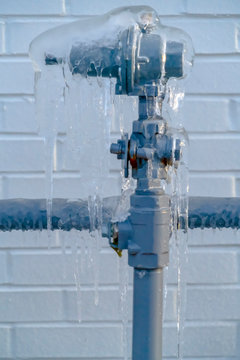Protecting Against Frozen Plumbing in Winter: Critical Advice
Protecting Against Frozen Plumbing in Winter: Critical Advice
Blog Article
This post underneath involving How to Prevent Your Pipes From Freezing is immensely entertaining. Try it and draw your own final thoughts.

Winter can damage your plumbing, particularly by freezing pipelines. Here's just how to stop it from occurring and what to do if it does.
Introduction
As temperatures drop, the risk of frozen pipes rises, potentially bring about pricey fixings and water damages. Recognizing exactly how to prevent frozen pipelines is crucial for property owners in chilly environments.
Avoidance Tips
Protecting susceptible pipelines
Cover pipes in insulation sleeves or make use of warm tape to protect them from freezing temperature levels. Focus on pipelines in unheated or outside locations of the home.
Home heating techniques
Maintain interior rooms appropriately heated up, especially areas with pipes. Open up closet doors to enable cozy air to flow around pipelines under sinks.
How to identify frozen pipes
Seek reduced water circulation from faucets, uncommon odors or sounds from pipes, and noticeable frost on exposed pipelines.
Long-Term Solutions
Structural modifications
Consider rerouting pipelines far from exterior wall surfaces or unheated areas. Include extra insulation to attic rooms, cellars, and crawl spaces.
Upgrading insulation
Invest in high-quality insulation for pipelines, attic rooms, and walls. Proper insulation aids preserve consistent temperatures and minimizes the risk of icy pipelines.
Shielding Outside Pipes
Garden tubes and outside faucets
Detach and drain pipes garden tubes before winter months. Install frost-proof faucets or cover outside taps with insulated caps.
Comprehending Icy Pipes
What triggers pipelines to freeze?
Pipes ice up when revealed to temperatures below 32 ° F (0 ° C) for extended periods. As water inside the pipes ices up, it increases, putting pressure on the pipe walls and potentially creating them to break.
Risks and damages
Frozen pipes can bring about supply of water interruptions, property damage, and expensive repairs. Burst pipes can flood homes and cause comprehensive structural damage.
Signs of Frozen Pipes
Identifying frozen pipelines early can avoid them from rupturing.
What to Do If Your Pipes Freeze
Immediate activities to take
If you believe icy pipes, keep faucets open up to eliminate pressure as the ice thaws. Make use of a hairdryer or towels soaked in hot water to thaw pipelines slowly.
Verdict
Protecting against frozen pipelines needs positive measures and fast responses. By recognizing the causes, indicators, and preventive measures, house owners can safeguard their plumbing throughout winter.
5 Ways to Prevent Frozen Pipes
Drain Outdoor Faucets and Disconnect Hoses
First, close the shut-off valve that controls the flow of water in the pipe to your outdoor faucet. Then, head outside to disconnect and drain your hose and open the outdoor faucet to allow the water to completely drain out of the line. Turn off the faucet when done. Finally, head back to the shut-off valve and drain the remaining water inside the pipe into a bucket or container. Additionally, if you have a home irrigation system, you should consider hiring an expert to clear the system of water each year.
Insulate Pipes
One of the best and most cost-effective methods for preventing frozen water pipes is to wrap your pipes with insulation. This is especially important for areas in your home that aren’t exposed to heat, such as an attic. We suggest using foam sleeves, which can typically be found at your local hardware store.
Keep Heat Running at 65
Your pipes are located inside your walls, and the temperature there is much colder than the rest of the house. To prevent your pipes from freezing, The Insurance Information Institute suggests that you keep your home heated to at least 65 degrees, even when traveling. You may want to invest in smart devices that can keep an eye on the temperature in your home while you’re away.
Leave Water Dripping
Moving water — even a small trickle — can prevent ice from forming inside your pipes. When freezing temps are imminent, start a drip of water from all faucets that serve exposed pipes. Leaving a few faucets running will also help relieve pressure inside the pipes and help prevent a rupture if the water inside freezes.
Open Cupboard Doors
Warm your kitchen and bathroom pipes by opening cupboards and vanities. You should also leave your interior doors ajar to help warm air circulate evenly throughout your home.

Hopefully you enjoyed our part on 6 Ways to Prevent Frozen Pipes. Thank you for taking the time to browse our blog. Liked our review? Please quickly share it. Help somebody else find it. We love reading our article about How to Prevent Your Pipes From Freezing.
Schedule Today Report this page